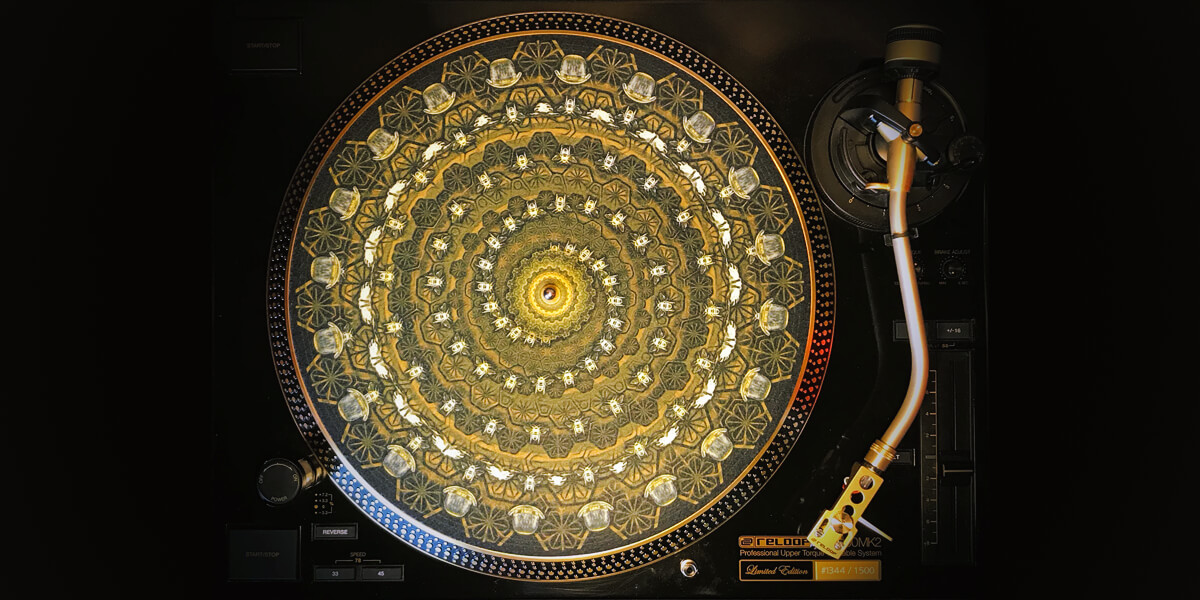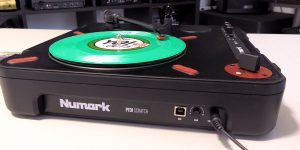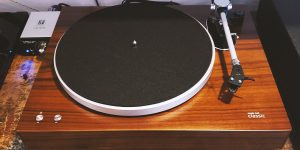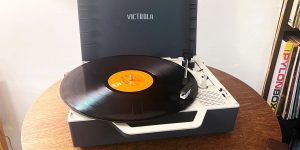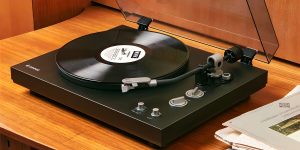As a devoted vinyl enthusiast, you’ve likely wondered if there’s a way to enhance your turntable’s sound quality. Well, I’m here to tell you that there’s a simple yet effective component that can make a significant difference in your listening experience: the turntable mat. This accessory acts as a buffer between your vinyl and the platter. As a result, it ensures minimal resonance and improved stability. This way, a mat significantly reduces unwanted vibrations and allows your stylus to trace the grooves accurately and precisely.
In this guide, we’ll delve into the crucial role that turntable mats play in vinyl playback while also exploring various materials and how they impact sound quality.
What is a vinyl slipmat?
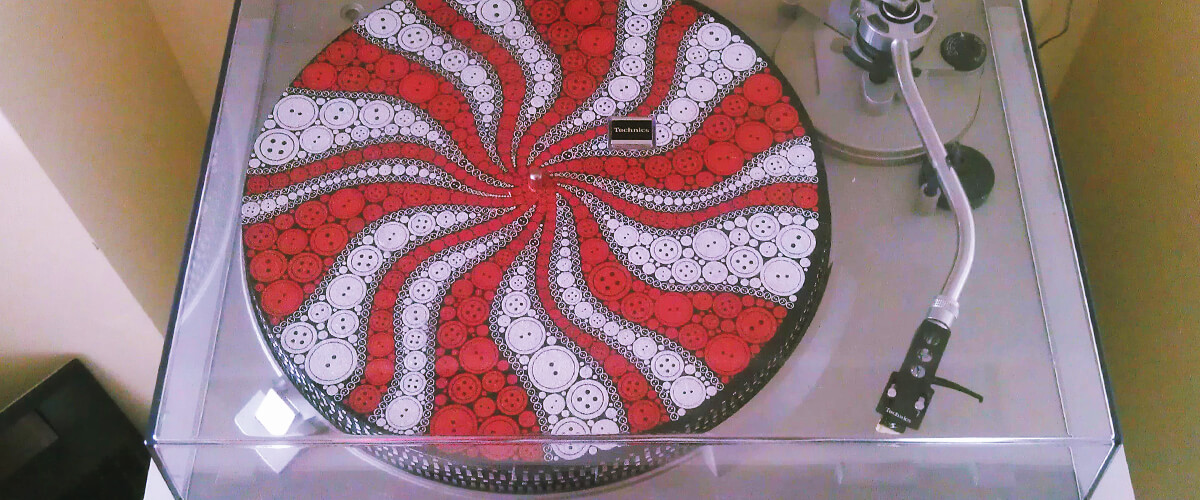
Before diving into more detail, let’s first grasp what a vinyl slipmat is and why it plays such an integral role in your turntable setup.
A vinyl slipmat, also known as a record/turntable mat and a record/turntable pad, is a circular disc, typically made from a range of materials like felt, cork, rubber, or leather, designed to fit snugly on your turntable’s platter. Its primary purpose is to provide a stable and protective surface for your vinyl records during playback.
The purpose of turntable mats
You might ask, why is it necessary to have a record pad when the turntable platter is already there? Great question! The turntable mat serves several vital functions.
Static electricity management
Static electricity can be a nuisance for you, as it tends to attract dust and debris to your records. This accumulation of particles not only affects the record’s sound quality but also increases wear on the stylus. Some record mat materials are excellent at dissipating static electricity, helping keep your records cleaner and reducing the likelihood of those annoying pops and clicks during playback. A slipmat significantly contributes to a more enjoyable and uninterrupted listening experience by managing static electricity effectively.
Record protection
A vital aspect of maintaining your vinyl collection’s longevity and sound quality is ensuring that your records are well-protected during playback. A high-quality turntable platter mat can prevent scratches or damage to your records caused by direct contact with the platter’s surface. Some materials, like felt or leather, offer a soft and gentle buffer that not only safeguards your records but also helps to dampen any residual vibrations. Prioritizing your records’ protection will ultimately lead to a more consistent and rewarding listening experience over time.

Enhanced sound quality
Every material used in a turntable mat has unique sonic characteristics, which can influence your turntable’s overall sound quality. By experimenting with different materials, you can customize your turntable’s sound to match your preferences and get the most out of your vinyl collection. Don’t be afraid to try various combinations, as the perfect slipmat material for your setup might be just a swap away!
Common turntable mat materials

Rubber
Rubber mats are a popular choice due to their durability and excellent vibration-dampening properties. They provide a stable and non-slip surface for your records, ensuring consistent contact between the stylus and the grooves. These items are known for delivering a tighter bass response and improved clarity, making them a great option for those who appreciate a clean, detailed sound. However, rubber slipmats may not be as effective as other materials in reducing static electricity.
Pros
- Durable and easy to clean.
- Resistant to wear and tear.
- Good vibration-dampening properties.
- Provides a tighter bass response and improved clarity.
Cons
- Can be heavier than other materials.
- May not be as effective at reducing static electricity.
Felt
Felt record player mats are popular among DJs due to their lightweight nature, affordability, and ease of customization. The soft texture of felt protects your records from scratches and damage. However, felt mats can generate static electricity and may not be as effective at reducing vibrations as other materials. Additionally, they can wear out or become dirty over time, requiring more frequent replacement.
Pros
- Lightweight and affordable.
- Soft, protecting your records from scratches.
- Easy to customize with designs or logos.
Cons
- Can generate static electricity.
- May wear out or become dirty over time.
- Less effective at dampening vibrations.
Cork
Cork mats for a turntable have gained popularity due to their ability to effectively reduce static electricity and dampen vibrations. They provide a warm, natural sound that many vinyl enthusiasts appreciate. Cork is also moisture-resistant and easy to clean, making it a low-maintenance option. However, cork record pads can be more expensive than other materials and may not be as durable as rubber or acrylic.
Pros
- Excellent at reducing static electricity.
- Good vibration-dampening properties.
- Provides a warm, natural sound.
- Resistant to moisture and easy to clean.
Cons
- Can be more expensive than other materials.
- May not be as durable as rubber or acrylic.
Leather
Leather record pads are known for their luxurious feel and ability to dissipate static electricity effectively. They offer excellent protection for your records, with a soft surface that prevents scratches and damage. Leather mats can deliver a warm, detailed sound, enhancing your listening experience. However, they can be more expensive than other materials and may require occasional conditioning to maintain their suppleness and prevent cracking.
Pros
- Excellent at dissipating static electricity.
- Durable and long-lasting.
- Protects records with a soft, luxurious surface.
- Can provide a warm, detailed sound.
Cons
- Can be more expensive than other materials.
- May require occasional conditioning to maintain its suppleness.
Acrylic
Acrylic platter mats are a visually appealing and durable option. They can provide a bright, clear sound with enhanced detail, making them an attractive choice for those seeking a crisper audio experience. Acrylic mats are easy to clean and maintain, and are resistant to wear. However, they can be more expensive than other materials and may generate static electricity. Additionally, acrylic slipmats are generally less effective at dampening vibrations compared to materials like rubber or cork.
Pros
- Durable and resistant to wear.
- Can provide a bright, clear sound with enhanced detail.
- Easy to clean and maintain.
Cons
- Can be more expensive than other materials.
- May generate static electricity.
- Less effective at dampening vibrations compared to other materials.

